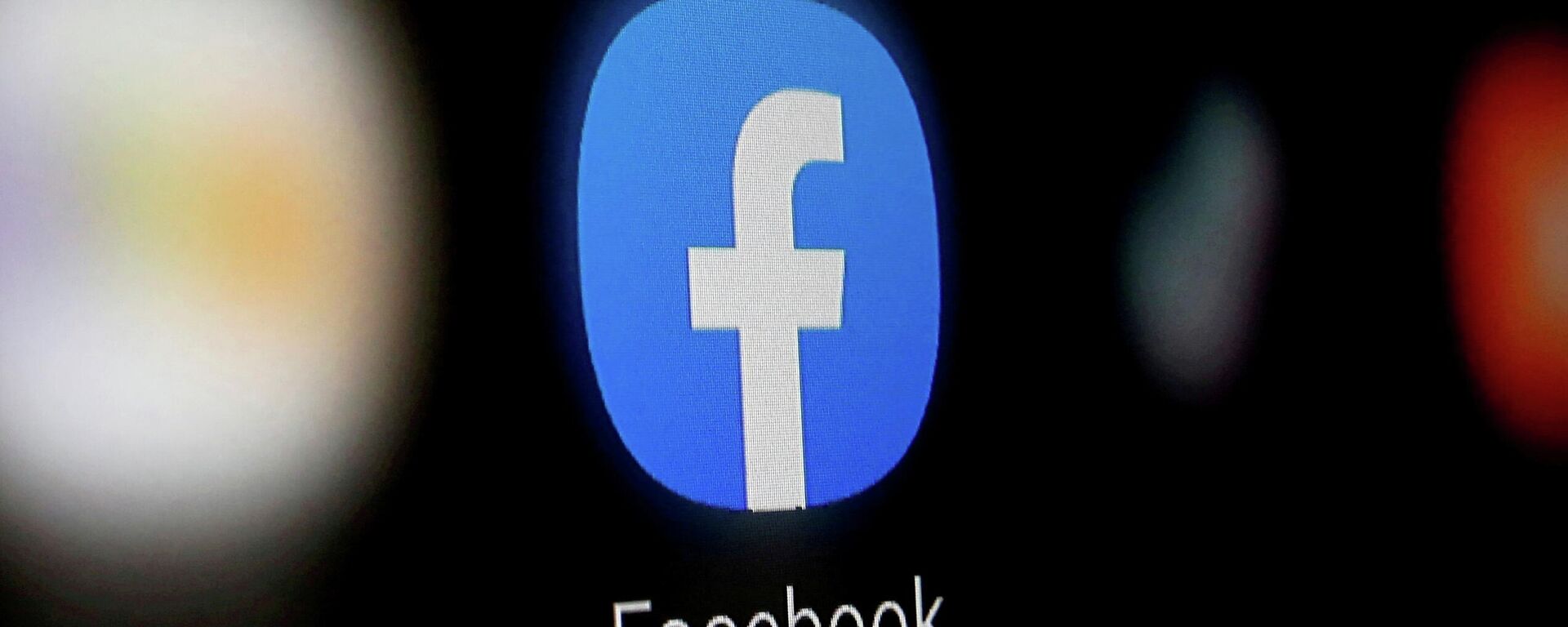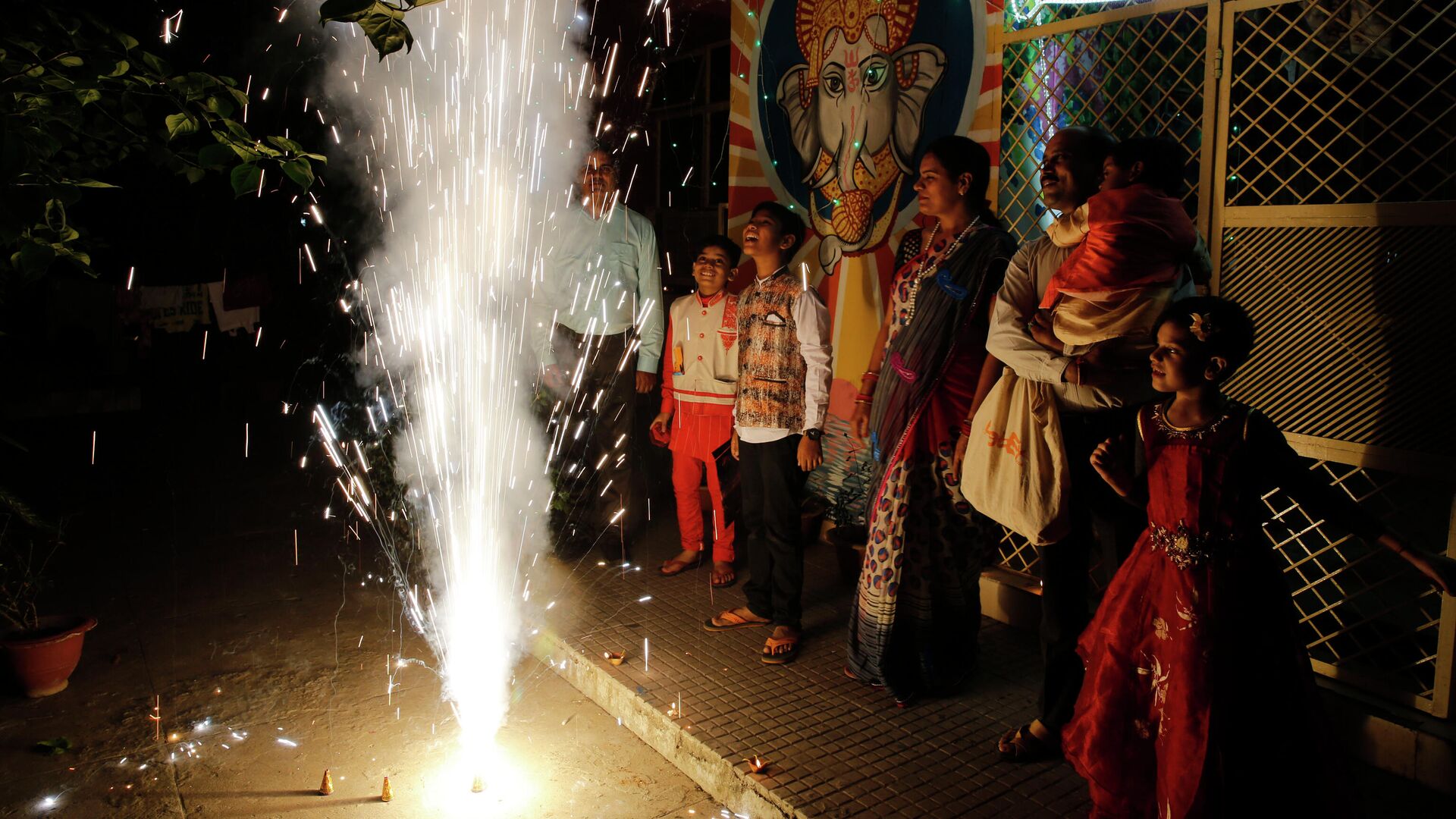https://sputnikglobe.com/20211103/diwali-night-may-plunge-delhis-air-quality-to-severe-level-study-warns-1090433718.html
Diwali Night May Plunge Delhi's Air Quality to 'Severe' Level, Study Warns
Diwali Night May Plunge Delhi's Air Quality to 'Severe' Level, Study Warns
Sputnik International
On Tuesday, India's capital Delhi recorded a 24-hour average air quality index (AQI) of 303. But on Wednesday morning, the air quality in the city's Jantar... 03.11.2021, Sputnik International
2021-11-03T08:11+0000
2021-11-03T08:11+0000
2021-11-03T08:11+0000
delhi
air pollution
diwali
air quality
https://cdn1.img.sputnikglobe.com/img/07e5/0b/03/1090437108_0:295:3072:2023_1920x0_80_0_0_b0ac3732058e038481bb53d51c112cb7.jpg
Air quality in Delhi may deteriorate to a "severe" level on the night of Diwali, according to the Indian Ministry of Earth Sciences' air quality forecast agency's System of Air Quality and Weather Forecasting And Research (SAFAR). The forecast agency in its latest bulletin on Tuesday revealed that Delhi's overall air quality is on the lower end of the very poor category. Although it may improve, it will remain in the poor range until Wednesday. According to the forecast agency, the impact of stubble burning on Delhi's Air Quality Index (AQI) is also expected to increase significantly from Thursday onward. The agency also said that the level of PM 2.5 ((particulate matter or particle pollution) is expected to be very poor from 4 to 6 November under a zero firecracker emission scenario. In the case of 50 percent firecracker emissions, the PM 2.5 is expected to reach 129 ug/m3 and further increase to 182 ug/m3 the next day, as per the SAFAR forecast. The agency additionally stated that air quality is likely to improve from 6 November, but will fluctuate between very poor and severe. Meanwhile, the temperature is also likely to increase with high humidity. Per experts, a rise in temperatures and humidity levels decreases the level of pollution. SAFAR further said the contribution of stubble fire in Delhi's PM2.5 is predicted to be between 20-40% during 4-6th November if fire counts are assumed to be similar to last year.According to reports, due to record-breaking rainfall in October and favourable wind direction, the impact of farm fires on the city's air pollution has remained comparatively lower this season so far. India is the world's third-biggest emitter of greenhouse gases after China and the United States. On Monday, Indian Prime Minister Narendra Modi told the COP26 climate summit that the country would achieve a net zero carbon emission target by 2070.
https://sputnikglobe.com/20211022/political-parties-used-fake-facebook-accounts-to-influence-delhi-state-polls-says-whistleblower-1090129003.html
delhi
Sputnik International
feedback@sputniknews.com
+74956456601
MIA „Rossiya Segodnya“
2021
Sushmita Panda
https://cdn1.img.sputnikglobe.com/img/07e5/05/12/1082926186_0:0:2048:2048_100x100_80_0_0_4474d0d7e27a36878eb8727832be74b4.jpg
Sushmita Panda
https://cdn1.img.sputnikglobe.com/img/07e5/05/12/1082926186_0:0:2048:2048_100x100_80_0_0_4474d0d7e27a36878eb8727832be74b4.jpg
News
en_EN
Sputnik International
feedback@sputniknews.com
+74956456601
MIA „Rossiya Segodnya“
Sputnik International
feedback@sputniknews.com
+74956456601
MIA „Rossiya Segodnya“
Sushmita Panda
https://cdn1.img.sputnikglobe.com/img/07e5/05/12/1082926186_0:0:2048:2048_100x100_80_0_0_4474d0d7e27a36878eb8727832be74b4.jpg
delhi, air pollution, diwali, air quality
delhi, air pollution, diwali, air quality
Diwali Night May Plunge Delhi's Air Quality to 'Severe' Level, Study Warns
On Tuesday, India's capital Delhi recorded a 24-hour average air quality index (AQI) of 303. But on Wednesday morning, the air quality in the city's Jantar Mantar area was in the "very unhealthy" category at 222.28. Earlier this year, the World Health Organisation updated Global Air Quality Guidelines (AQGs).
Air quality in Delhi may deteriorate to a "severe" level on the night of Diwali, according to the Indian Ministry of Earth Sciences'
air quality forecast agency's System of Air Quality and Weather Forecasting And Research (SAFAR).
The forecast agency in its latest bulletin on Tuesday revealed that Delhi's overall air quality is on the lower end of the very poor category. Although it may improve, it will remain in the poor range until Wednesday.
According to the forecast agency, the impact of stubble burning on Delhi's Air Quality Index (AQI) is also expected to increase significantly from Thursday onward.
The agency also said that the level of PM 2.5 ((particulate matter or particle pollution) is expected to be very poor from 4 to 6 November under a zero firecracker emission scenario.
In the case of 50 percent firecracker emissions, the PM 2.5 is expected to reach 129 ug/m3 and further increase to 182 ug/m3 the next day, as per the SAFAR forecast.
"However, even if we consider 50% of additional firecracker-related emissions of 2019, then AQI is predicted to degrade to [the] SEVERE Category from 4th November night onward and will remain severe until 5th November", the forecast agency said.
The agency additionally stated that air quality is likely to improve from 6 November, but will fluctuate between very poor and severe. Meanwhile, the temperature is also likely to increase with high humidity.
Per experts, a rise in temperatures and humidity levels decreases the level of pollution.
SAFAR further said the contribution of stubble fire in Delhi's PM2.5 is predicted to be between 20-40% during 4-6th November if fire counts are assumed to be similar to last year.

22 October 2021, 13:28 GMT
"The peak in share (~ 40%) will touch on 5th November 2021 if fire counts are assumed to be ~ 4,000 as expected", the forecast revealed.
According to reports, due to record-breaking rainfall in October and favourable wind direction, the impact of farm fires on the city's air pollution has remained comparatively lower this season so far.
India is the world's third-biggest emitter of greenhouse gases after China and the United States.
On Monday, Indian Prime Minister Narendra Modi told the COP26 climate summit that the country would achieve a net zero carbon emission target by 2070.



